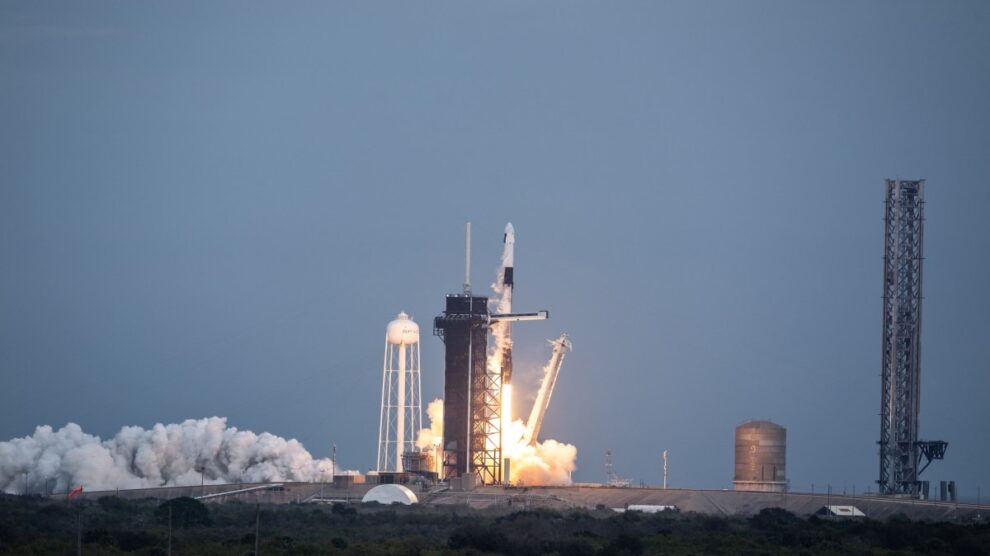As SpaceX continues to develop its revolutionary Starship vehicle, concerns are emerging about the feasibility of launching this massive spacecraft from Cape Canaveral. A recent report from Ars Technica highlights the growing unease among SpaceX’s competitors regarding the limited space at this historic launch site and the potential safety implications of Starship operations. This article explores the complexities of integrating a next-generation launch vehicle into an established spaceport ecosystem.

SpaceX Starship: A New Era of Spaceflight
Before delving into the concerns, it’s important to understand what makes Starship unique:
- Size and Capability: Starship is a massive, fully reusable launch vehicle designed for deep space exploration and potential Earth-to-Earth transportation.
- Revolutionary Design: The vehicle consists of two stages: the Super Heavy booster and the Starship spacecraft, both of which are intended to be fully reusable.
- Ambitious Goals: SpaceX envisions Starship as the key to making human life multi-planetary, with a particular focus on Mars colonization.
The Space Crunch at Cape Canaveral
The primary concern raised by SpaceX’s competitors revolves around the physical limitations of Cape Canaveral:
- Limited Real Estate: Cape Canaveral is a bustling spaceport with multiple launch pads in close proximity.
- Starship’s Footprint: The sheer size of Starship and its associated infrastructure requires significant space, both for launches and potential landings.
- Existing Operations: The Cape is already home to numerous active launch programs from various companies and agencies.
Safety Concerns and Operational Challenges
The introduction of Starship to Cape Canaveral raises several safety and operational concerns:
1. Proximity to Other Launch Pads
- Starship launches and landings could potentially impact operations at nearby pads.
- There are concerns about the safety radius required for such a large vehicle.
2. Risk of Rapid Unscheduled Disassembly (RUD)
- In the event of a launch or landing failure, the potential damage area could be significant.
- Competitors worry about the impact on their own facilities and operations in case of a RUD event.
3. Scheduling and Airspace Management
- Integrating Starship launches into the already complex launch schedule at the Cape could be challenging.
- The airspace and range safety requirements for Starship might be more extensive than for conventional rockets.
Potential Solutions and Alternatives
Given these challenges, several potential solutions are being considered:
1. Alternative Launch Sites
- Starbase in Texas: SpaceX has been developing its own launch facility in Boca Chica, Texas, which could serve as a primary launch site for Starship.
- Offshore Platforms: SpaceX has expressed interest in developing offshore launch platforms, which could alleviate some of the space constraints and safety concerns.
2. Infrastructure Upgrades at Cape Canaveral
- Significant modifications to existing facilities might be necessary to accommodate Starship safely.
- This could include expanded safety zones, reinforced structures, and new landing areas.
3. Operational Adjustments
- Developing new protocols and procedures for coordinating Starship activities with other launches.
- Implementing advanced tracking and safety systems to manage the increased complexity.
Implications for the Space Industry
The debate surrounding Starship’s integration at Cape Canaveral has broader implications:
1. Competition and Innovation
- The challenges posed by Starship are pushing the entire industry to innovate in launch site design and operations.
- This situation highlights the competitive nature of the commercial space industry.
2. Regulatory Considerations
- Regulatory bodies may need to reassess and update guidelines for launch site operations to account for next-generation vehicles like Starship.
- This could lead to new standards for safety zones, launch frequencies, and risk assessments.
3. Future of Spaceports
- The Starship situation at Cape Canaveral may accelerate the development of new, purpose-built spaceports designed for next-generation vehicles.
- It could also spur investment in offshore and mobile launch platforms.
The Path Forward
As the space industry continues to evolve, finding a balance between innovation and operational safety will be crucial. Several key factors will shape the future of Starship operations at Cape Canaveral:
- Collaborative Solutions: Open dialogue between SpaceX, its competitors, and regulatory bodies will be essential in addressing concerns and finding mutually beneficial solutions.
- Technological Advancements: Continued improvements in Starship’s reliability and safety features could help alleviate some of the concerns raised by competitors.
- Regulatory Adaptation: Regulatory frameworks may need to evolve to accommodate the unique challenges posed by next-generation launch vehicles like Starship.
- Infrastructure Investment: Significant investments in launch site infrastructure and safety systems may be necessary to support the coexistence of Starship with other launch operations.
Conclusion: Navigating the Challenges of Progress
The concerns raised by SpaceX’s competitors regarding Starship operations at Cape Canaveral highlight the complex challenges that come with revolutionary advancements in spaceflight technology. As the industry pushes the boundaries of what’s possible, it must also grapple with the practical realities of integrating new systems into existing infrastructure.
The ultimate resolution of this situation will likely require a combination of innovative engineering, careful planning, and collaborative problem-solving among all stakeholders. Whether Starship finds a home at Cape Canaveral or operates primarily from alternative sites, the discussions and solutions that emerge from this challenge will play a crucial role in shaping the future of space exploration and commercial spaceflight.
As we stand on the brink of a new era in space travel, the industry must work together to ensure that progress in vehicle capabilities is matched by advancements in launch site operations and safety. The story of Starship at Cape Canaveral is more than just a logistical challenge – it’s a testament to the rapid evolution of the space industry and a harbinger of the exciting developments yet to come.










Add Comment